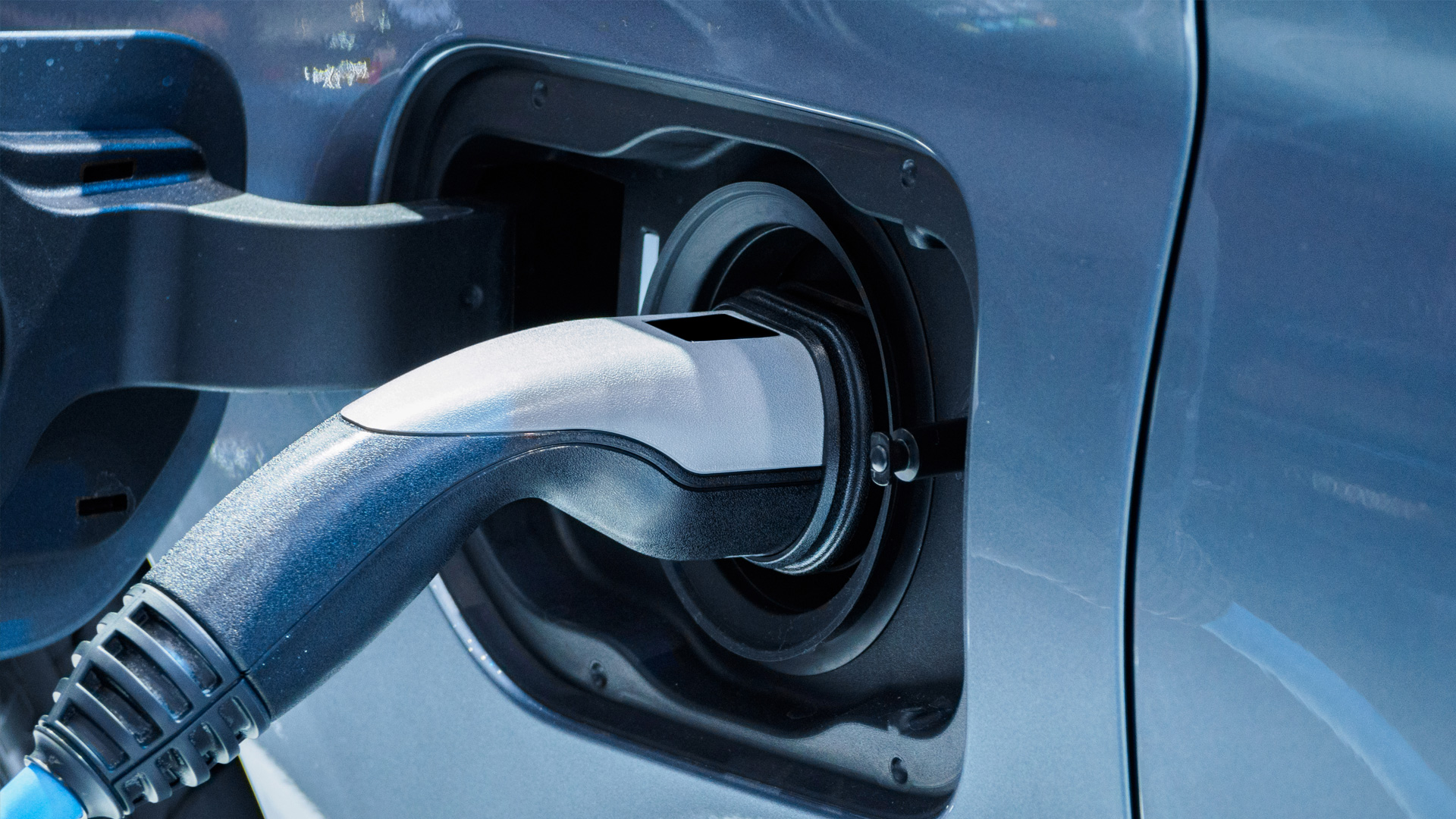
Estimating potential energy use, oil use and carbon emission impacts of advanced light- and heavy-duty vehicle technologies and alternative fuels
The Argonne National Laboratory Transportation Systems Assessment Group is pleased to announce the release of VISION 2022 model. The VISION model is updated annually.
What is VISION?
The VISION model has been developed to provide estimates of the potential energy use, oil use and carbon emission impacts of advanced light- and heavy-duty vehicle technologies and alternative fuels through the year 2050. Beginning in 2008, the analysis horizon has been extended to 2100. The model consists of two Excel workbooks: a Base Case of US highway fuel use and greenhouse gas (GHG) emissions to 2050 (to 2100 in 2008 and newer versions) and a copy (of the Base Case) that can be modified to reflect alternative assumptions about advanced vehicle and alternative fuel market penetration.
Annual Updates
VISION News: 2022 Release
The Base Case in the most recent version of the model reflects projections relating to light and heavy highway vehicle in Energy Information Administration’s (EIA’s) Annual Energy Outlook (AEO) 2022. EIA’s AEO 2022 projections end in the year 2050. In the 2022 VISION model update, these projections are extended to the year 2100. For GHG emissions, the VISION model uses emission coefficients derived from Argonne’s GREET model. The GHG coefficients are for the full fuel cycle.
VISION 2022 MODEL
Download VISIONMajor Expansions and Updates
- Updated with GHG and upstream energy rates from GREET1_2022.
- Updated with EIA AEO 2022 Reference Case projections to 2050.
- Beginning with the 2021 version, VISION subdivides Class 7 & 8 heavy-duty vehicles into three market segments with separate accounting for multiple powertrains technologies:
- Class 7-8 vocational single-unit trucks
- Class 7-8 day cab (regional) tractor-trailer combination trucks
- Class 7-8 sleeper (long haul) tractor-trailer combination trucks
- Beginning with the 2018 version, VISION can handle three types of light-duty electric vehicles (EVs):
- EV A: EV with less than or equal to 100 miles certification range
- EV B: EV with less than or equal to 200 miles certification range
- EV C: EV with less than or equal to 300 miles certification range
(In the VISION Base Case, EV A, EV B, and EV C represent EV100, EV200, and EV300 of AEO, respectively.)
- Beginning with the 2017 version, VISION includes four alternative powertrain technologies for medium- and heavy-duty trucks:
- Plug-in gasoline electric
- Plug-in diesel electric
- Battery electric
- Fuel cell electric
- Beginning with the 2012 version, VISION can handle two types of light-duty PHEV
- PHEV A: PHEV with less than or equal to 20 miles CD range, assumed to operate in blended mode
- PHEV B: PHEV with greater than 20 miles CD range and ability to operate all electrically during CD operation
(In the VISION Base Case, PHEV A and PHEV B represent PHEV10 and PHEV40 of AEO, respectively.)
- Beginning with the 2011 version, the procedure for computing electricity VMT share of PHEV VMT is updated to reflect the new methodology in the SAE Standard J2841.
Instructions
A description, user’s guide, and instructions for use of the model are available from the links on the right side of this page. There is also a short User Guide on the first sheet of the Excel workbook. Notes contained throughout the workbook indicate the sources of data used in the model (though they may not be completely up-to-date).
The user guide and model description were updated in January 2014. The updated document combines two older files, “Description of Model Used to Estimate the Impact of Highway Vehicle Technologies and Fuels on Energy Use and Carbon Emissions to 2050” and “VISION 2008 User’s Guide,” written in 2004 and 2006, respectively. This new document describes the 2013 version including all of the new features that have been added since 2006.
VISION Developers
The VISION model was developed by various analysts over time. Primary credit goes to John Maples, now of EIA, and to Anant Vyas and Margaret Singh, of Argonne National Laboratory, for substantial updating. Following Anant’s retirement in 2022, the VISION model is now maintained regularly and updated annually by Xinyi Wu and Yan Zhou. Its development and annual updates have been sponsored by Phil Patterson (now retired) and Jake Ward, U.S. Department of Energy, Office of Energy Efficiency and Renewable Energy. Raphael Isaac from the same office has taken over the sponsorship role beginning with the 2022 update.
Prior Versions of VISION
- VISION 2012 AEO Base Case uses EIA’s AEO 2012 projections of both advanced vehicle technology penetration and new vehicle fuel economy estimates to 2035 and then extends them. This version starts to handle two types of PHEV:
- PHEV A: PHEV with less than or equal to 20 miles CD range, assumed to operate in blended mode
- PHEV B: PHEV with greater than 20 miles CD range and ability to operate all electrically during CD operation
(In the VISION Base Case, PHEV A and PHEV B represent PHEV10 and PHEV40 of AEO, respectively.)
- VISION 2013 AEO Base Case uses EIA’s AEO 2013 projections of both advanced vehicle technology penetration and new vehicle fuel economy estimates to 2040 and then extends them. The historical stock and VMT of light, medium and heavy duty trucks are updated to reflect the changes in FHWA Highway Statistics Table VM-1.
- VISION 2014 AEO Base Case uses EIA’s AEO 2014 projections of both advanced vehicle technology penetration and new vehicle fuel economy estimates to 2040 and then extends them. This version starts to handle two types of EV:
- PHEV A: PHEV with less than or equal to 20 miles CD range, assumed to operate in blended mode
- PHEV B: PHEV with greater than 20 miles CD range and ability to operate all electrically during CD operation
(In the VISION Base Case, PHEV A and PHEV B represent PHEV10 and PHEV40 of AEO, respectively.)
- Moreover, the historical MPG of medium and heavy duty trucks (both for new trucks and stock average) are updated by using data obtained from EIA.
- VISION 2015 AEO Base Case uses EIA’s AEO 2015 projections of both advanced vehicle technology penetration and new vehicle fuel economy estimates to 2040 and then extends them.
VISION 2016 AEO Base Case uses EIA’s AEO 2015 projections of both advanced vehicle technology penetration and new vehicle fuel economy estimates to 2040 and then extends them. - VISION 2017 AEO Base Case uses EIA’s AEO 2016 projections of both advanced vehicle technology penetration and new vehicle fuel economy estimates to 2040 and then extends them. This version added alternative powertrain technologies to medium- and heavy-duty trucks including plug-in gasoline electric, plug-in diesel electric, battery electric, and fuel cell electric. This version also updated car and light-duty truck (commercial 2B truck included) survival functions due to the changes in EIA NEMS model for 2016 projections. Historical Class 3-6 and Class 7-8 alternative fuel vehicle sales and stock were updated to match the data reported on the EIA website.
- VISION 2018 AEO Base Case uses EIA’s AEO 2018 projections of both advanced vehicle technology penetration and new vehicle fuel economy estimates to 2040 and then extends them. This version starts to handle three types of EV: EV A, EV B, and EV C.
- VISION 2019 AEO Base Case uses EIA’s AEO 2019 projections of both advanced vehicle technology penetration and new vehicle fuel economy estimates to 2040 and then extends them.
- VISION 2020 AEO Base Case uses EIA’s AEO 2020 projections of both advanced vehicle technology penetration and new vehicle fuel economy estimates to 2040 and then extends them.
- VISION 2021 AEO Base Case uses EIA’s AEO 2021 projections of both advanced vehicle technology penetration and new vehicle fuel economy estimates to 2040 and then extends them. This version starts to subdivide Class 7 & 8 heavy-duty trucks into three market segments: vocational single-unit trucks, day cab tractor-trailer combination trucks, and sleeper tractor-trailer combination trucks.
